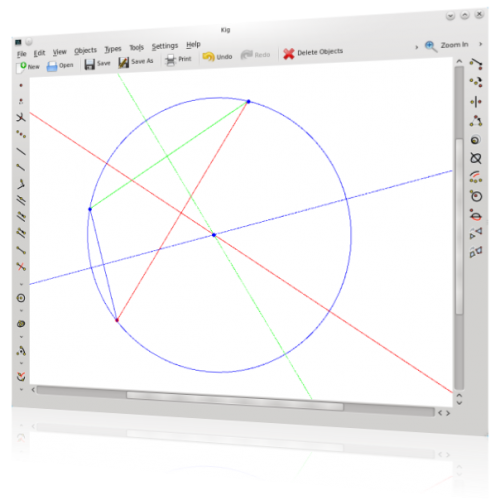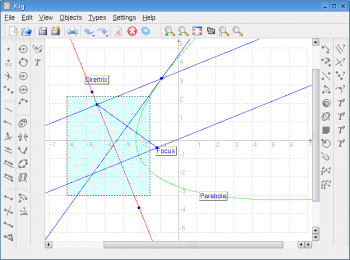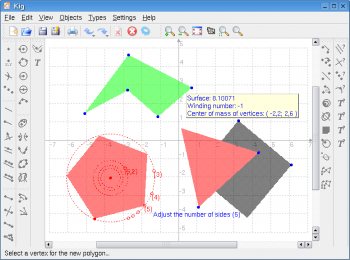Kig: Difference between revisions
Appearance
Pipesmoker (talk | contribs) No edit summary |
Pipesmoker (talk | contribs) →Screenshots: Added more screenshots |
||
| Line 23: | Line 23: | ||
{| cellpadding="5" | {| cellpadding="5" | ||
| [[Image:kig- | | [[Image:Kig-select_and_names.png|350px|thumb]] | ||
| '''Kig''' | | You can select objects by drawing a box. Give each object a suitable name. | ||
|- | |||
| [[Image:kig-polygons.png|350px|thumb]] | |||
| '''Kig''' has a tool for drawing regular polygons. Arbitrary polygons are supported, too. | |||
|} | |} | ||
See [[Kig/Screenshots|more screenshots...]] | |||
==Documentation== | ==Documentation== | ||
Revision as of 17:55, 7 July 2010
Home » Applications » Education » Kig
| Kig is a program for exploring geometric constructions.
It is part of the KDE Education Project. |

Kig is meant as a better replacement for such free programs as KGeo, KSeg and Dr. Geo and commercial programs like Cabri.
Kig is a useful and powerful utility for high school students and teachers, and as a fun project for me and others. I have learned a lot by working on it, and it's fun to work together with other people on it. I've written much of the Kig code myself, but I've also had a lot of help from other people.
Features
Screenshots
 |
You can select objects by drawing a box. Give each object a suitable name. |
 |
Kig has a tool for drawing regular polygons. Arbitrary polygons are supported, too. |
Documentation
Kig Macros
Since Kig can import and use third-part macros as built-in objects, it can have new objects, being more and more powerful.
If you don't know how to import a macro, please read the FAQ.

